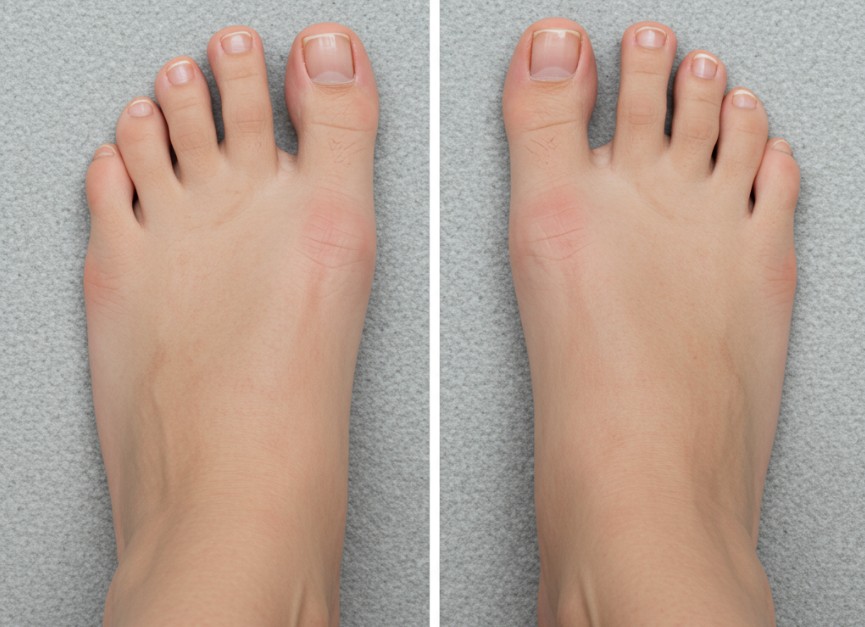Foot and ankle surgeons warn against taking part in growing surgery trend.
Getting excited over a snazzy pair of Jimmy Choo stilettos is one thing—having your feet surgically altered to wear them is another. As extreme and imprudent as it may sound, the cosmetic surgery craze is not just for faces anymore—it has now moved to the feet, and it is kicking up a storm.
Today, a host of women are turning to cosmetic surgery to give their feet a “face lift” and fit them into high-fashion shoes. But physician members of the American College of Foot and Ankle Surgeons, who specialize in foot surgery, are taking a stand and calling this an ill-advised trend.
Fillers to Alteration Surgery Cosmetic foot surgery
Cosmetic foot surgery runs the gamut, from injectable fillers to toe shortening or lengthening and bunion and hammertoe surgery when there is no pain or dysfunction. Many of these foot-perfecting techniques are borrowed from medical procedures established years ago to relieve pain and restore function, not to alter the size or look of the foot.
“Undergoing foot surgery solely for cosmetic reasons raises serious concerns,” says Michael Cornelison, DPM, FACFAS, a Cupertino, California foot and ankle surgeon and Fellow member of the American College of Foot and Ankle Surgeons. “We need our feet for walking and getting around, so breaking these bones to reconstruct them for appearance’s sake is a troubling matter. It often affects function and can bring risks and complications.”
In fact, the American College of Foot and Ankle Surgeons considers this fad so disturbing that it has taken an official position, asserting that cosmetic foot surgery should not be undertaken because it carries risks without medical benefit.
“I tell my patients that one of the biggest potential risks is taking a foot that doesn’t hurt and in the attempt to make it look better, turning it into a foot that gives you chronic pain,” says Dr. Cornelison.
Unmet Expectations and Scars
Another big drawback is the likely possibility that the patient’s expectations will not be entirely met because surgery cannot make an “abnormal” foot look completely normal. What is more, the incision can leave an unsightly scar.
Along with chronic pain and scarring, other potential risks of cosmetic foot surgery include infection, worsened deformity, bleeding, nerve damage and a serious reaction to the anesthesia.
Despite these caveats, it is easy to see why many are lured into surgically changing the appearance of their feet. Marketing tactics give these procedures spa-like names that trivialize the seriousness of surgery and make each “service” seem like a rejuvenating, risk-free beauty treatment.
“Those who are compelled by these terms to pursue cosmetic surgery for their feet should be sure to ask for a description of all the possible risks and negative consequences, along with what the procedure is expected to do,” urges Thomas S. Roukis, DPM, PhD, FACFAS, president of the American College of Foot and Ankle Surgeons and a foot and ankle surgeon from La Crosse, Wisconsin. “To get a full understanding of the surgery, it’s important to seek the opinion of an experienced foot and ankle surgeon who has done these procedures for medical rather than cosmetic reasons.”
Down Time and Complication Risks
Furthermore, as cosmetic surgery moves south on the body—from the face to the chest to the tummy to the feet—it is crucial to consider the need to function well. “We typically take our feet for granted and don’t realize how much we depend on them to walk, drive, shop and take care of family members, for example,” says Dr. Roukis. “The last thing you want is to undergo all the post-op downtime and possible risks and complications for a questionable benefit.”
Benefits of Foot Surgery for Pain and Dysfunction
It is important to realize, however, that foot and ankle surgery is frequently a positive life-changing event for people who have suffered from pain and/or dysfunction not adequately relieved by non-surgical procedures and where the risks of surgery are far outweighed by the potential benefits.




